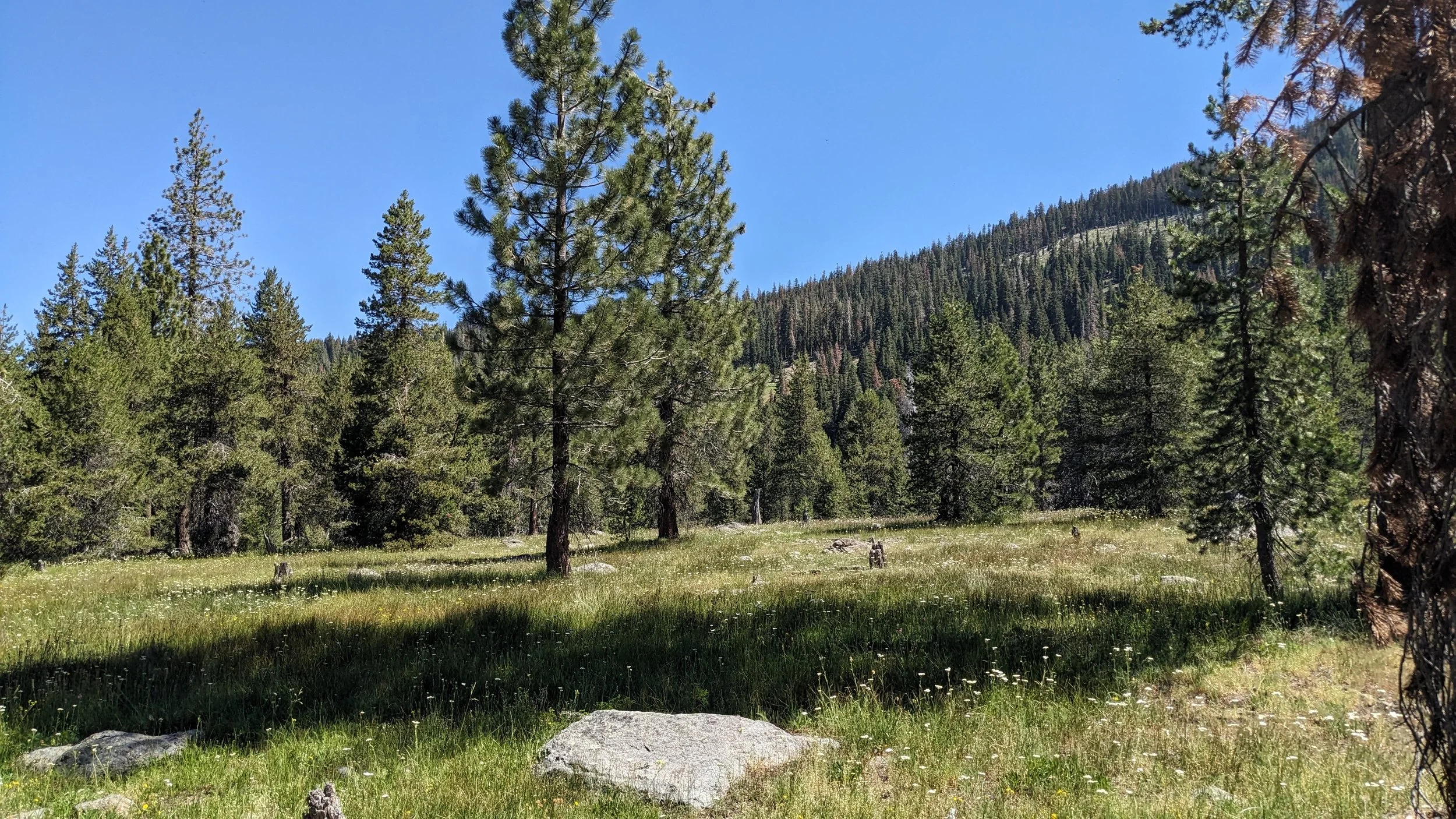
Watershed Stewardship Program
Meadow Restoration
Every Meadow Matters
Healthy meadows are rare but essential ecosystems in Trinity County. Over decades, many have been degraded by channel incision, fire suppression, overgrazing, roadbuilding, and logging.
As water drains away and conifers take root, once-lush wetlands lose their ability to support wildlife, regulate streamflow, store carbon, and provide cool, clean water for fish downstream.
Restoring Trinity County’s Lost Meadows
Bringing Meadows Back to Life
The Watershed Center is working with partners to locate, assess, and restore both existing and “lost” meadows using satellite imagery, LiDAR, and on-the-ground surveys. Together, we are:
Identifying and mapping meadows across the region to guide restoration and fuel-reduction planning, in tandem with the Klamath Meadows Partnership.
Using process-based restoration tools—like beaver dam analogs—to slow water, rebuild soils, and repair erosion.
Removing encroaching conifers so grasses and wildflowers can return and soil moisture can rebound.
Reconnecting floodplains with heavy equipment where needed, filling deeply eroded channels to restore natural hydrology.
These efforts help rehydrate the landscape, improve habitat, and support the long-term resilience of local ecosystems.
Meadow Restoration in Action
Corral Gulch: A Meadow Reborn
At Corral Gulch, decades of incision had turned a once-wet meadow into a dry pine forest. Restoration teams removed conifers, filled the channel, and rebuilt the floodplain to a “Stage 0” condition—giving the stream room to evolve naturally again. Native plants, willow stakes, and woody materials were added to stabilize the site and jump-start recovery.
Completed in 2025, the project is already showing strong results: widespread floodplain inundation, improved groundwater recharge, and ideal conditions for wet-meadow vegetation to return. This collaborative effort—funded by the California Department of Fish and Wildlife and supported by tribal, agency, and local partners—marks a major step toward restoring meadow ecosystems across the region.
What is a Meadow?
It’s more complex than you’d think!
WRTC staff members Josh Smith and Bridger Cohan present their work on meadow identification and restoration at the popular “Science on Tap” event in September 2024.













